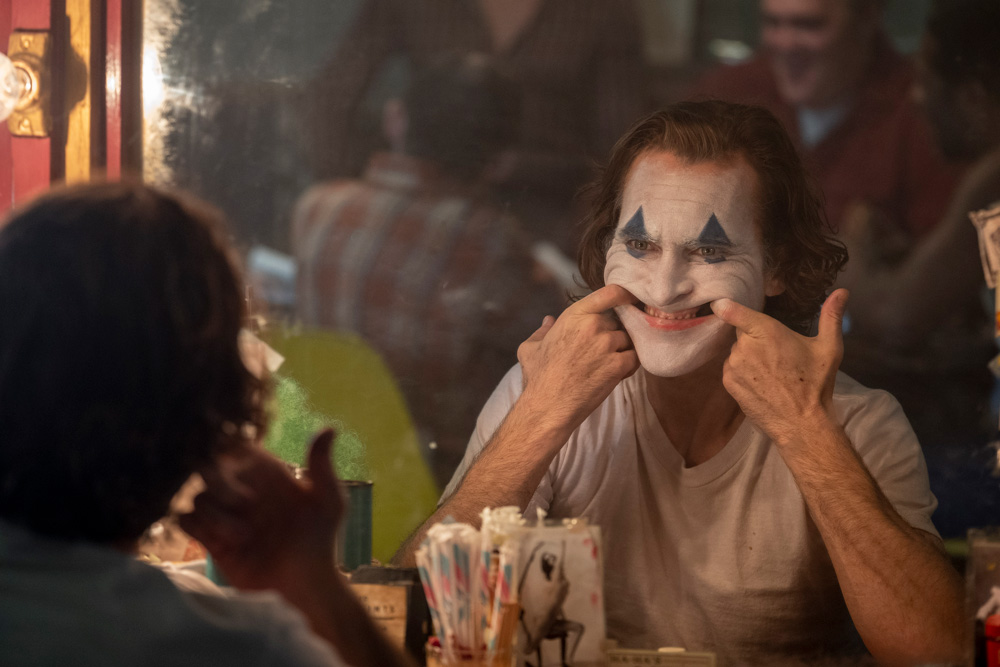
(C)2019 Warner Bros. Ent. All Rights Reserved TM & (C) DC Comics
"Joker" Until the victims of society acquire "kingly qualities" - Resonance with evil that touches on taboos
2019.10.04
When madness is given a “reason,” a terrifying sense of empathy emerges.
There are many portrayals that threaten to tarnish the public image he has built up until now - the Joker in this film is thoroughly a ``victim''. Being despised, assaulted, betrayed, ridiculed, and abused by others. But strangely enough, even with such drastic changes, what appears on screen is unmistakably the Joker himself. One reason for this is that elements that form the Joker are included as "foreshadowing" throughout the screen.
For example, the clown motif. In the movie, there are scenes where Arthur is dressed up as a clown, holding a sign, and playing the role of a sandwich man, as well as scenes where he is sent to visit a hospital. Being a clown is a way to make ends meet, and if you dress like this, you will disappear from your miserable self and become your ideal figure that will make people smile. The influence of Charles Chaplin's masterpiece `` Modern Times '' (1936) can be seen in Arthur's movements as a clown (in fact, the song `` Smile '' from the same movie is played in the main story).
It's funny, but it also has a sense of sadness, as the images of young children being flattered or lynched make it seem like they're being preyed upon by the capitalist system. As I will explain later, by living a life of laughter, you become the target of the anger that erupts in the city.

“Joker” (C) 2019 Warner Bros. Ent. All Rights Reserved TM & (C) DC Comics
And then there's laughter. The Joker is known for his ``crazy laugh,'' as exemplified by his ``Why so serious?'' (``The Dark Knight'') line, and the origins of that laughter are answered in multiple layers. One is that Arthur has a disease that makes him laugh. The other type of smile is to give others a sense of happiness and security. And in the end, it's a false smile that allows us to survive the heavy and painful reality of life.
This hollow and pitiful ``laughter,'' which could be called ``empty laughter,'' leaves the audience with a strong shock from the beginning. The footage lasts for about a minute and shows Arthur sticking his fingers into his mouth and forcing the corners of his mouth to lift into a smile. Coupled with Joaquin Phoenix's strong performance, who seems to have sold his soul to the devil, the audience can feel the future of this man named Arthur becoming a symbol of madness.
He is a good person who wants to bring laughter to people, but sometimes a sharp emotion like "murderous intent" that cannot be hidden peeks through. "Joker" uses a heretical method, but it is full of Joker characteristics, and depicts the birth of a Monster. Show off with a strange tension.

“Joker” (C) 2019 Warner Bros. Ent. All Rights Reserved TM & (C) DC Comics
Developing a sad and sad character that was the complete opposite of what had been done before was a dangerous challenge, as one wrong move could lead to serious burns, but director Phillips and Joaquín were able to successfully create a ``potent'' film that will go down in history. Yes.
The director says that this work was influenced by the masterpiece `` Dog Day Afternoon Afternoon'' (1975), which takes a ``criminal perspective'', and the aggressive pity that is less gentle - Gus Van Sant once directed `` Elephant ''. (2003) depicts the background of the boys who commit mass shootings, instilling in the audience an uncomfortable feeling of sympathy for the violent Joker. A resonance that doesn't stick is waiting for you.
A dangerous feeling, as if I had come into contact with a taboo. I know in my head that accepting it is a mistake, but it transcends my sense of ethics and morality and continues to waver. By showing the process that led to the image of "Joker" that everyone knows, the structure not only paradoxically emphasizes "madness" but also conveys the "longing" and "pain" that lie behind it, as well as the audience's sensibilities. The two parties are linked together, forming a relationship of complicity that cannot be dismissed as someone else's problem. ``Joker'' is a movie that is truly cunning, sincere, and made with ``emotion.''

